More Information on Accessory Power
Accessory Power
An accessory power system allows options to help simplify power supply connections and can help make a product more marketable. It can also open up opportunities for new markets.
Accessory power defines power connections to peripheral equipment from a central system. This illustration shows a typical accessory power system using IEC 60320 interconnection components, with a country-specific cord set (in this example, a Continental European cord set) that connects to a wall socket. Country-specific plugs and sockets are not needed for accessory power connections.
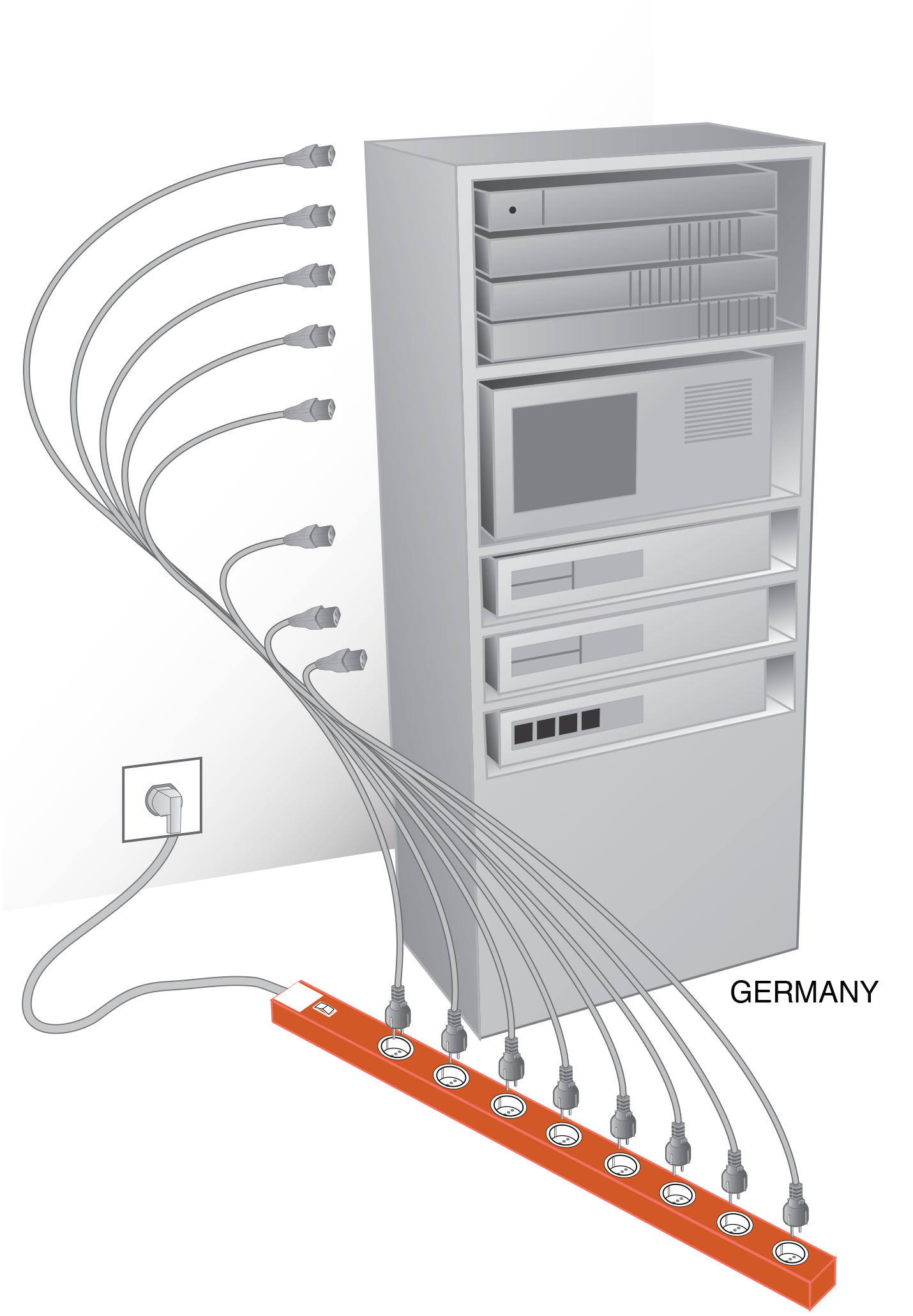
“Accessory power is specifying one plug and socket configuration that is accepted globally for connections between equipment systems. A country-specific mains connection is needed only for the primary power supply connections,” explained Dan Ford, Technical Support Specialist at Interpower. “This makes it easier to design and build equipment that can be accepted worldwide. The IEC 60320 interconnection system is generally accepted for use throughout the world. By using a plug and socket configuration that is accepted globally, it can allow the equipment to be more marketable.”
Using an accessory power distribution system is also a key advantage for equipment systems that use multiple electrical and electronic devices, such as industrial, information technology, medical, laboratory, or food production. “A key to success for a company trying to compete worldwide is to offer products that are easily adapted to the needs of the global markets without requiring reconfiguration by the user,” Dan said.
Components Used in Accessory Power
In order to design products that do not require reconfiguration by the user, one way is to incorporate accessory power distribution components that are based on the IEC 60320 standard.
The key components can include:
- a power inlet,
- an outlet,
- a connector,
- a plug connector,
- and a jumper cord set.
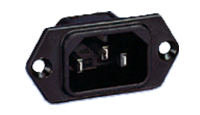 |
Power InletA component common to the input power and accessory power distribution is the AC power inlet. It is typically either snap-mount or screw-mount. |
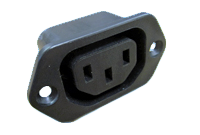 |
OutletThe IEC outlet can be an important part of the equipment. It is typically either snap-mount or screw-mount and may be integrated with an EMI shield and filter to minimize radiated and conducted noise emissions. In applications where vibration or transportation of equipment could create unwanted power disconnections, consider the use of a connector lock. |
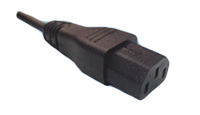 |
ConnectorThe connector is commonly molded on or assembled on to flexible cable. |
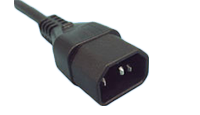 |
Plug ConnectorThe corresponding component to the outlet is the IEC 60320 plug connector, which is commonly molded or assembled on to flexible cable. |
 |
Jumper Cord SetA jumper cord set is a combination of a connector and a plug connector on flexible cable. For a complete list of all of the IEC 60320 components, see IEC 60320 Appliance and Interconnection Couplers guide. |
 |
Accessory Power StripAnother key component to the accessory power system is the Accessory Power Strip (APS). “At its core, this power strip incorporates the AC power inlet, with multiple AC power outlets, typically four, but as many as 20 outlets. Other features commonly included are power on/off switches, circuit breakers, supplementary overcurrent protector or fuse holders and fuses,” Dan said. “It is important to note that overcurrent protection is for the entire power strip. A power strip with a 15A circuit breaker does not mean that each outlet can deliver 15A maximum each. It means that the entire power strip, whether four or 20 outlets, can deliver up to 15A across all outlets combined,” he emphasized. |
 |
Power Distribution UnitThe Power Distribution Unit (PDU) fits into a 19-inch rack. While it is similar to an Accessory Power Strip because it is a socket strip using IEC 60320 components, it is in a case enclosure that is larger than an APS. The most common place to find a PDU is in an equipment rack. All of the components can be installed into one rack and work together as a specific unit. This rack is designed to hold different components of a system. Examples include a complete computer system (monitor, CPU, keyboard, and printer), test equipment, medical research equipment, and telephone equipment. |
Incorporating Accessory Power
“At Interpower, we can make it easier to build equipment that can be sold worldwide because different components work together in one system. Instead of having to make four different systems to export to four different countries, a company can design one system and then add a cord set with a country-specific plug,” Dan said. “This allows the same system to be exported globally with cost-saving benefits.”
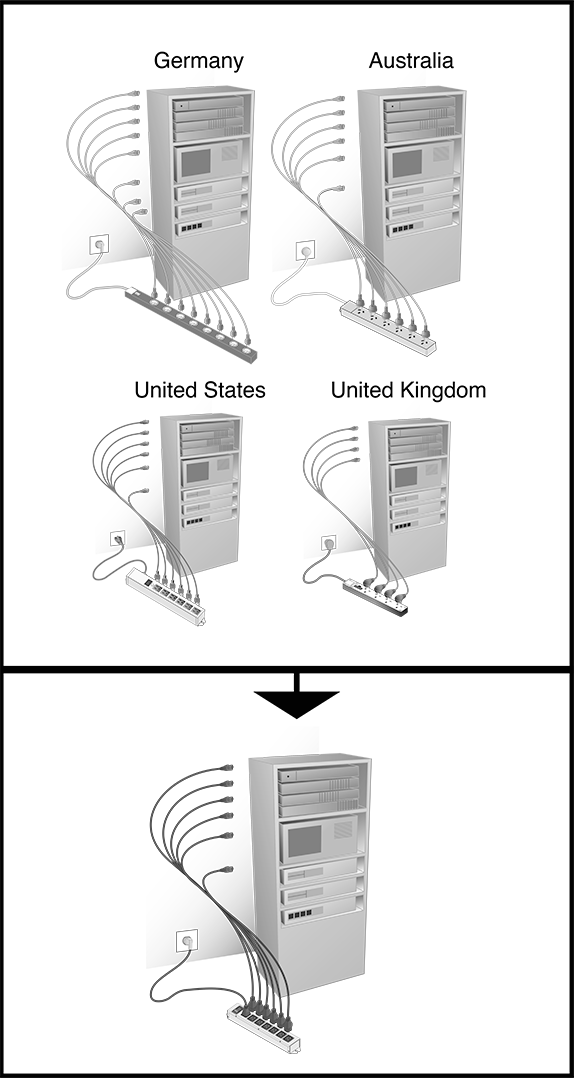
Additional Resources
Interpower offers free technical support and value-added services. For more information on accessory power offered by Interpower, see Accessory Power, the Featured Product page, Accessory Power Systems white paper, and Interpower’s webcast on Accessory Power for Worldwide Markets.





